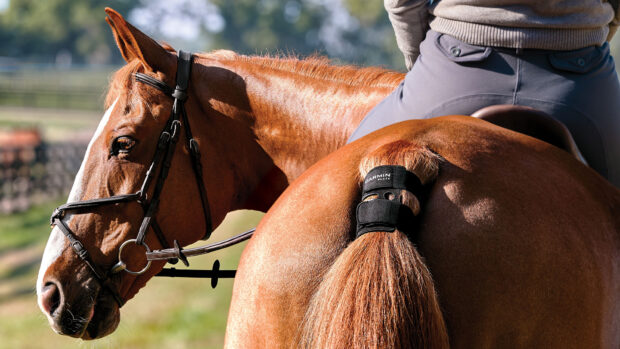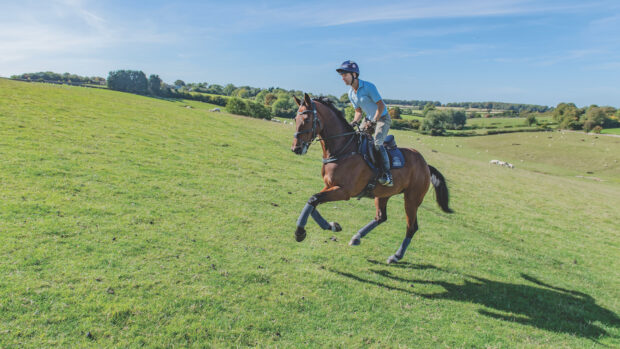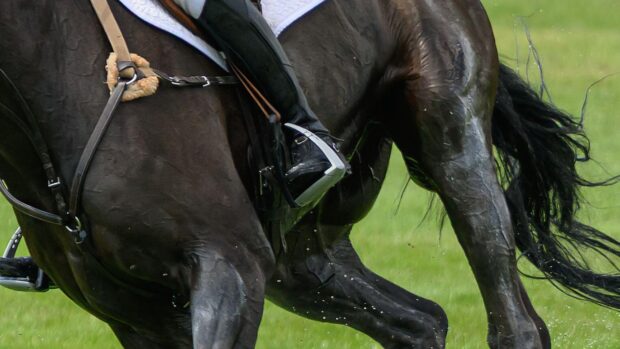Any fitness programme must be tailored to the horse – its breed, its age, and how long it has been off work. However, where, in the past, a hack for a dressage horse consisted of the walk to the school and back, more dressage riders and show jumpers are starting to use the same basic fittening programme as the event riders.
“In dressage, people focus too much on competition and not enough on building muscle and strength,” says Carl Hester. William Funnell agrees: “My approach is very similar to my wife Pippa’s, especially if my horses have had a long lay-off.”
Weeks one to three
Most professionals will walk their horses in week one, building from half an hour the first day, to up to one hour by the end of the week, up to two hours the following week. This is seen as critical to the long-term health and soundness of the horse.
“It is important to remember that you are trying to build them up, not break them down,” says event rider Richard Waygood.
After a long lay-off, both William and Pippa walk the horses on roads for three weeks to tighten the ligaments and tendons, building up to trot work up hills. William says, “I do not agree with pounding them on the roads on the flat. We do trot up the hills, however, as that takes the pressure off the front legs.”
Carl Hester takes the same approach with his dressage horses. “To develop the hindquarters, we will work up and down hills, just as you would with an event horse,” he says.
Dressage riders and show jumpers tend to include some lungeing and work in the school in the first weeks, which event riders usually avoid at this stage — “unless you need to make sure that, if the horse is feeling a bit fresh, it has had its bucks on the lunge,” says event rider Chris King.
Sussex-based dressage rider and trainer Dane Rawlins stays mostly in the school and uses lungeing and long-reining in the first week, working the horses to the point where they are warm, but not breaking out in a sweat.
Danish dressage rider and German-qualified Bereiter Markus Bauer, currently based in Piltdown, Sussex, says that walking the horse off after schooling is almost as important as the schooling itself.
“You often see horses worked and sweating, and then just put back in the stable,” he says. “That will have a very unhealthy effect on the horse. It will come out the next day stiff with aching muscles. The horse will not last very long, it will have a stiff back and there is a danger of him tying up.” He always walks his horses off for at least 20 minutes after exercise, he says.
Weeks four and five
As the horse gets fitter, the professionals build up the periods of trot and introduce canter and school work.
Richard likes to canter during the fourth week on a school surface. “Sometimes people get their horses too fit in walk and trot, and then they explode in canter,” he says. He also believes that the canter is better than trot for making a horse supple and working through its back. By the fifth week he has started flatwork schooling.
Markus adds that a fit horse must be made to sweat a little bit. “Without this sweating process, the muscles will not build and change in shape,” he says. “It’s like a person going to the gym and coming home without having worked up a sweat — they have not done enough.”
Weeks six and seven
The professionals now build on canter work and start more intensive flatwork schooling and some jumping. William starts with some cross poles built into the flatwork.
“I will also introduce shoulder-in and counter-canter to build the different muscles and get the horses aerobically fit,” he says. He adds that bounces help to build and maintain the jumping muscles, along with regular hill work. “You do not need to jump big to get them fit,” he says, just keep to a height at which you are comfortable.
Depending on how the horse is progressing, the professionals may also start to introduce pipe-opening gallops, whatever the discipline. “I take mine up the gallops,” William says. “I have found that it is good for conditioning the horses’ bodies, and good for their minds.”
Carl also says he gallops his horses. “While a dressage horse needs more fat on it to build into muscle, we would work our horses faster than you can in an arena to build the fitness,” he explains.
Week eight and beyond
Now the professionals start going to small local shows to build competition fitness and to make sure the horse is mentally prepared. Depending on the horse, this may be possible from week six, particularly if he has not had a long lay-off.
Dane hopes to be out competing by the sixth week. “The final fitness does not happen until the horses have been out competing a few times,” he says.
From this point, the disciplines tend to differ in their approach. Eventers would expect to take around three months to get a horse fit. For the higher-level events, they now start doing fast work, either on the gallops or through interval training. Richard builds to three 10-minute bursts of canter, followed by three minutes of walk. Warmbloods benefit from gallops, similar to a racehorse’s regime, he says, as they find fast work difficult. Regular gallops open the lungs and build stamina.
A show jumper would already be out competing by now. William expects to get a Grade A horse competition-fit in two months, even if it had had a long lay-off.
For dressage, says Carl, “Up to Elementary level, a horse only needs half an hour in the school. For Grand Prix horses it can be up to an hour.”
The more excitable horses, he adds, do not need to do so much fittening work. However, lazier horses need more fast work to sharpen them up.



